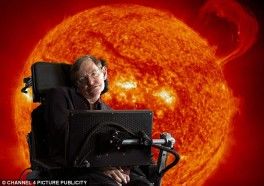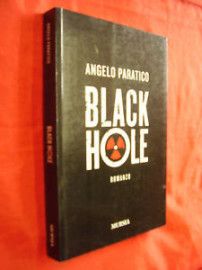![!Btv(BowEWk~$(KGrHqMOKiUEvPMddQfOBL9O1WvZ3!~~_35[1]](https://www.gingkoedizioni.it/wp-content/uploads/2015/02/BtvBowEWkKGrHqMOKiUEvPMddQfOBL9O1WvZ3_351-202x270.jpg) In March 2015 the Lhc (Large Hadron Collider) will be switched on again after a great upgrade. Having discovered the Higgs Boson (improperly nicknamed God’s particle) now all the top theoretical physicists will concentrate on this Tower of Babel of a machine to look into the Susy phenomenon concerning super symmetry.
In March 2015 the Lhc (Large Hadron Collider) will be switched on again after a great upgrade. Having discovered the Higgs Boson (improperly nicknamed God’s particle) now all the top theoretical physicists will concentrate on this Tower of Babel of a machine to look into the Susy phenomenon concerning super symmetry.
Just a few physicists claim that the elusive Higgs bosons may not have been discovered at all. Their discovery was announced 2 years ago: with a Nobel Prize, awarded to Peter Higgs and Francois Englert for their work on the theory of the Higgs boson.
Some researchers at the University of Southern Denmark’s Centre for Cosmology and Particle Physics Phenomenology still dispute that while the Cern scientists did discover unique new particles, there’s no conclusive evidence of them being the Higgs bosons, as other particles could have created the same results.
“The current data is not precise enough to determine exactly what the particle is,” says university researcher Mads Toudal Frandsen. “It could be a number of other known particles.”
More study will be needed in the future even if we should add that the opinion of Dr. Frandsen is not taken seriously by the greatest part of his peers.
In 2008 I did publish with Mursia of Milan a work of science fiction, the title was Black Hole and it went out with some acclaim. Then the Lhc was damaged and it did stop for one year. Even if the book was released far too late the first edition sold in a month.
My book was based on the assumption that LHC getting at full power might destroy our planed by creating a microscopic black hole. Then the LHC was restarted and the Higgs Bosons were discovered and soon after it was halted again to carry out all the works indispensable to increase its smashing power to levels never seen before in the universe, a work which has now been completed. Will the Lhc destroy our planet and ourselves?
We don’t know, and we’ll not know even if that will really happen, because the Earth will evolve in a speck of dust in a fraction of a second: no cry, no agony, no desperation…we’ll all find ourselves in the other dimension we call the hereafter. That could be the Apocalypse of the Bible (ancient Greek: ἀποκάλυψις apocálypsis, from ἀπό and καλύπτω meaning “uncovering” that is a disclosure of knowledge) and that was indeed that was the very end in my science fiction book.
Just a few months ago the greatest living physicist, Professor Stephen Hawking, reported claims which could be see similar to what I wrote in my book which, I repeat, was based only on fantasy, intuition and some superficial researches.

Here is what Hawking has declared to the Daily Mail:
The elusive ‘God particle’ discovered by scientists in 2012 has the potential to destroy the universe, Professor Stephen Hawking has warned.
At very high energy levels, the Higgs boson could cause space and time suddenly collapse – and ‘we wouldn’t see it coming’, the former Cambridge professor of mathematics says.
The God particle, which gives shape and size to everything that exists, could cause a ‘catastrophic vacuum delay’ if scientists were to put it under extreme stress.
The God Particle could destabilise at high energy, threatening the universe, but the Cern particle accelerator is too slow to cause such a problem.
A disaster like this is very unlikely for the time being as physicists do not have a particle accelerator large enough create such an experiment, but Prof Hawking’s comments have excited scientists, the Sunday Times reported.
The theoretical physicist wrote his thoughts on the Higgs boson in the preface to a new book, Starmus, a collection of lectures by scientists and astronomers including Neil Armstrong, Buzz Aldrin, Queen guitarist Brian May.
Prof Hawking wrote: ‘The Higgs potential has the worrisome feature that it might become megastable at energies above 100bn giga-electron-volts (GeV).
‘This could mean that the universe could undergo catastrophic vacuum decay, with a bubble of the true vacuum expanding at the speed of light.
‘This could happen at any time and we wouldn’t see it coming.’
WHAT IS THE GOD PARTICLE?
The Higgs boson was a key missing piece in the jigsaw for physicists in trying to understand how the universe works.
Scientists believe that a fraction of a second after the Big Bang that gave birth to the universe, an invisible energy field, called the Higgs field, formed.
This has been described as a kind of ‘cosmic treacle’ across the universe. As particles passed through it, they picked up mass, giving them size and shape and allowing them to form the atoms that make up you, everything around you and everything in the universe.
This was the theory proposed in 1964 by former grammar school boy Professor Higgs that has now been confirmed.
Without the Higgs field particles would simply whizz around space in the same way as light does.
A boson is a type of sub-atomic particle. Every energy field has a specific particle that governs its interaction with what’s around it.
The professor did add sarcastically, however, that such an event is unlikely in the near future.
He said: ‘A particle accelerator that reaches 100bn GeV would be larger than Earth, and is unlikely to be funded in the present economic climate.’
Professor John Ellis, a theoretical physicist at Cern, said: ‘One thing should be made clear. The discovery of the Higgs boson at the Large Hadron Collider (LHC) did not cause this problem, and collisions at the LHC could not trigger the instability, because their energies are far too low.’
Particle accelerators make subatomic particles travel at greater and greater speeds as they are pumped with more energy before smashing them together.
Scientists do this to try and spot tiny fragments of particles which fly off, and it is how the Higgs boson was discovered at the Cern LHC in Switzerland in 2012.
In that experiment, physicists noticed unexpected debris from the collisions that fitted with what British scientist Peter Higgs had predicted in the early 1960s.
The Higgs boson particle is thought to be part of the mechanism that gives matter its mass, but scientists do not fully understand it yet.

![cop[1]](https://www.gingkoedizioni.it/wp-content/uploads/2016/08/cop1.jpg)


